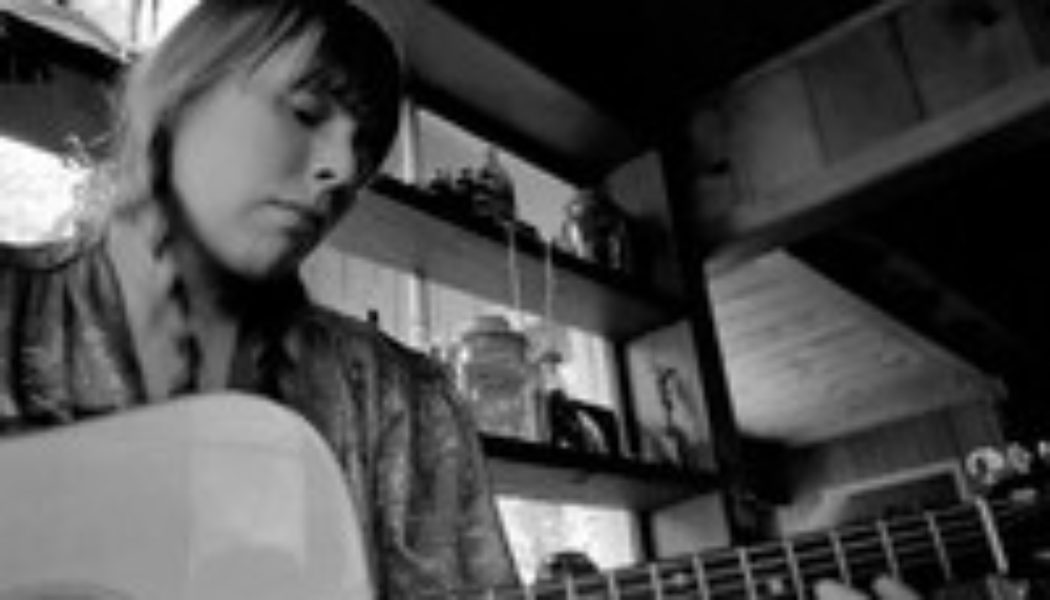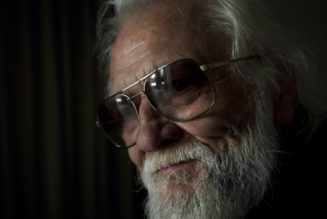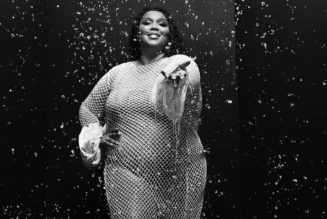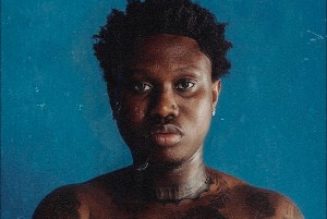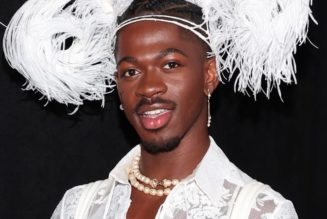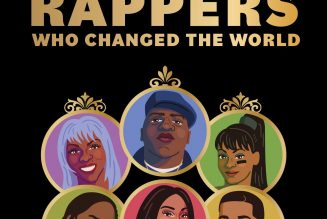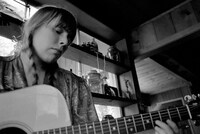
Adapted and excerpted from “Traveling: On the Path of Joni Mitchell.” © 2024 by Ann Powers. Reprinted with permission of Dey Street Books, an imprint of HarperCollins Publishers.
Love and sex and pretty pictures for the papers — this is what people talk about when it comes to Joni Mitchell and her boy gang, but that was all extra. Music was the point, and the prize. I need to talk about the music Joni made with, about, for, and despite the boys.
Coming to Los Angeles to reach the audience she knew she deserved, Mitchell primarily sought not lovers, but peers. Someone who could give her a look of recognition when she turned a chord progression she’d heard on a Tim Hardin recording into something completely different. Somebody who’d come into a recording session and hit the harmony she heard in her head. Someone else to listen to the mix, so she could shore up arguments and not be dominated by any one opinion. As she knew from every scene she’d ever walked through, if Mitchell didn’t become one of the guys, she’d still be surrounded by men. All the studio players. The recording engineers and producers. David Geffen and Elliot Roberts, doing her business, and Mo Ostin at her label. Almost everybody in her sights, except for the few women with ambitions like her own, feeling like the spotlight was on them just for existing.
The boys around Mitchell felt her unflagging commitment to her work. The way she’d pull out her guitar and turn away at a holiday dinner or even in the thick of a make-out session. Some, like Stephen Stills, would admit that her talent scared them. But most wanted to solve the puzzles her songs laid out. Graham Nash may have found it romantic to hear her tinkling away at the piano in their Lookout Mountain house, but he was also listening like a hawk.
He recalls one such moment in his memoir: “Once, I heard her playing in a gorgeous new configuration. After she was finished and had gone into the kitchen, I picked up her guitar and the notes that cascaded out were like shooting stars; they astounded me. I figured out a couple of ways to play interesting sounds with it, and then I finished ‘Lady of the Island’ using Joni’s special tuning.”
That nice guy Graham. He stole her tuning! Maybe that’s one of the reasons why she was, in David Crosby’s words, “a very turbulent girl”: the boys were always at her shoulder trying to figure out her tricks. Nash probably ran into the kitchen immediately and said, Hey, Joni, I wrote a song for you! Did she throw a salad fork at him? At least he wrote her a sexy lyric to go with his borrowing, all about her burnished golden limbs.
It was okay. I mean, she was taking from them, too. Mitchell needed to figure out how to put some rock and roll into her swoon, and that she got from the boys. You can see and hear how they shaped one another’s sound in a recording of folk-rock pioneer Dino Valenti’s anthem “Get Together” at the Big Sur Folk Festival in 1969. Her moment onstage with CS&N (plus Lovin’ Spoonful frontman John Sebastian) was clearly something of a showcase for her, and it worked: Rolling Stone later singled her out as one of the festival’s most exciting surprises. (That review included a photograph of her leaning against Crosby, cool in a cowboy hat.) There’s a hint of her future composition “Big Yellow Taxi” in the strum. Mitchell took the lead vocal.
Watching the performance now, I can see her pulling back on the phrases, her timing making the melody almost seem like a counterpoint. Stills played off of this by driving things forward with hard little riffs and some vocal embellishments borrowed from Cuban music, which he loved. Nash, Crosby and Sebastian, hand-clapping a bouncing rhythm, took a minute to get the harmonies right. But they were solid by the second chorus. Joni had laid it all out for them, dropping into little diminished fifths at the end of the verses, pointing Crosby toward some unexpected middle notes. The boys pushed her forward. She pulled them back, her singing saying, Try a different route.
In her face in that clip I see something that isn’t usually there, won’t be there until she assembles her big bands a few years later: relaxation. These guys got her. She’d been around one or two men who could sing the way she could — had heard Tim Hardin continually expanding his soul thing and Tim Buckley getting ever more ethereal and funkier as his music got weirder. But nobody was seeking exactly the combination she wanted, mixing the airy space of Joan Baez’s folk ballads with the old-fashioned pop sweets (“musical-y,” she’d once called the tone) of the Beatles, and adding the push of heavier rock and roll.
CSNY were that combination. Crosby, like her, loved jazz and had even sung in a duo with the Black troubadour Terry Callier for a while. Stills was a rocker who dipped his feet into the Latin diaspora; he’d been raised that way in Florida and other points south. And Nash had come up in the song factory of the British Invasion. Neil Young was in and out of the picture, a self-styled loner, but when he was around, he made Mitchell feel even more comfortable, because of their old Canadian connection and a prickly love of new musical things that complemented her own. She could learn from these guys.
The songs Mitchell wrote then, and the ones the boys wrote back, form an infinite round, with each final chord seeming to echo into the next one’s opening measures. All the romance stuff pales in comparison to what these friends accomplished musically, writing hits that defined the turn of the 1970s on the folk-rock scene. Each song amplifies their intimate connections, their occasionally feverish competitiveness and their conviction that, individually and together, they were better than anybody else. And each sold the story of their mutual, complicated love.
Over the next few years, the Laurel Canyon circle expanded, and she nurtured new collaborations, moving others to the back burner as she entertained new possibilities. Taking control as a producer was a big part of this process. Crosby’s spare production on Song to a Seagull had served its purpose, isolating her voice as if it were a sapphire in a floating ring setting, but she was driven toward wider vistas. Reprise brought in Paul Rothchild to help on Clouds — he’d done groundbreaking work helping organize another garrulous personality, Doors front man Jim Morrison, on that band’s hit records — but it was a bad match. Rothchild stepped out at some point to tend to some Doors business, and Mitchell persuaded engineer Henry Lewy to finish the album with her alone. From then on they were a team, with Lewy becoming a more crucial and long-standing collaborator than any of her more glamorous friends. “Henry Lewy and I have had a working relationship made in heaven, where there’s no ego in play and it’s just pure joyous child’s play, mutually supportive,” she told Malka Marom in the mid-1970s. He would never be credited as a coproducer, she wasn’t sharing the captain’s chair anymore, though a memo from Ostin shows he was paid a one percent royalty on Clouds and Blue. His input was central as she organically grew her sound, adding lush multitracked harmonies and other Beatles-esque flourishes to Ladies of the Canyon and tentatively exploring the rhythmic palettes of jazz and global music.
Not just in the lyrics, but in their bones, the songs were all about relationships. When Nash huffed in a 1971 interview that people were just listening to the Canyon songs for the gossip, he definitely protested too much. They brought it all on themselves, name-checking and borrowing from one another constantly. Here’s a little playlist tracing some ways that Joni and the boys made music together, from song to song, even when they didn’t admit it. It’s a product of my imagination, not reflecting strict chronology; one listener’s guide to a fine group romance.
Start with a track from Mitchell’s second album, Clouds, inspired by the New York lover-mentor she’d left as well as the one who greeted her in California. “That Song About the Midway” is a slightly bitter kiss goodbye to a dazzling egotist. Leonard Cohen and Crosby both fit the bill. Its haunting qualities come from her use of the Mixolydian mode, often used in the blues. Crosby heard something in this, and he wrote “Guinnevere,” which appears on CS&N’s debut album, also from 1969. That song introduces the “magic tuning” David discovered while trying to figure out what Joni was up to on guitar. Its lyrics describe three women, his polyamorous dream; one is clearly Joni. Nash came up with his own Renaissance Faire fancy, perhaps in response — “Lady of the Island.” This is the one Nash wrote on Joni’s open-tuned guitar. Its blue wash of psychedelic rock shows up in Joni’s “The Arrangement,” from Ladies of the Canyon. It’s influenced by Debussy in the way Nash’s songs were then redolent of classical guitar compositions. The assertive moodiness suggests her doubts about the common-law marriage she’d eased into with Nash.
He replied, or so I hear, with “Our House.” Just as “The Arrangement” argues against old-fashioned house and home, his song, of course, draws things back into the domestic sphere. Musically, it’s Willy reminding everybody in the circle that they all still love the Beatles. Parlor piano for the longhairs, major chords for happy people. Joni wasn’t having any of that, though, so she offered him “Willy,” also on Ladies of the Canyon. She bursts his bubble with her melancholy. Their romance was getting rocky. Time for Neil Young to walk into the room with the song he wrote for Willy after the breakup, “Only Love Can Break Your Heart.” It’s a weird one, though. It offers up more parlor piano, but with the keys a little wobbly. Its lyrics advise self-preservation in the face of potential love disaster. The effect is soothing, but a little bitter.
Where was Stephen Stills while all this was happening? On his own trip, but still tuned in. He joined into the writers’ round with an epic flavored by all the other songs I’ve mentioned so far: “Suite: Judy Blue Eyes.” A rock and roll plea if there ever was one, directed at Judy Collins, who’d electrified his life but then chose New York and psychoanalysis over California and her dashing, drug-addled love. As Willy had with Joni, in the lyrics Stephen begs Judy to put aside her own things, just be his lady and change his life. The Don Quixote of baby boomer romance, “Suite” is four songs in one — something the Beatles were doing, but so was Joni in some of her more sweeping songs, like “The Dawntreader,” from her first album. (That one’s about David, of course.) Stephen was clearly listening to her experiments.
But now it was time for Joni to make a break from her boys and their edifying, tenacious influence. She said farewell in the sweetest way, with “Big Yellow Taxi.” Is there a more CSNY song not by CSNY? And you know what, trying on their poppier, even danceable style more deliberately gave Joni a song that would become a major fan favorite, covered and interpolated by other artists for decades to come. It’s best known for its environmentalist lyrics and a chorus that offers exactly the kind of melody that you wake up in the morning hearing and then can’t get out of your head. “Taxi” is a much bigger turning point for Joni than most fans usually recognize. Here is where the African diaspora rhythms that take over her work around 1975 first get her dancing; here’s where she throws in those old swing-era harmonies and pushes her phrasing up to double speed. Doing her own take on the CSNY thing, she discovered the template for her jazz era, soon to come.
It’s fitting that this song should end our playlist; it represents the full fruit of Joni’s musical interaction with her boy gang, in which she shows she can play every part they offer — rocker, wit, dreamer, weirdo — and do so laughing.
You might be wondering why I didn’t include “Woodstock” on my playlist. That song deserves its own place in the story of Joni Mitchell’s interactions with her boys. It has long played a central and complicated role in her legend. Written in a Manhattan hotel after she turned on the television to watch reports of CSNY playing the biggest festival of the rock era, “Woodstock” has been held up as an example of how sexism kept women from the countercultural action and how they used their creativity to triumph anyway. The story I heard for years was about a damsel mistaken for being in distress: the band had decided that she was too delicate to dive with them into the crowds at Yasgur’s farm and sequestered her away seemingly against her will. The truth had more to do with pure business than misplaced gallantry. Mitchell was scheduled to appear on the Dick Cavett Show the next day, and Geffen, her agent, considered that more important than a trek into the chaos of what then looked like a somewhat disastrously overextended freak fest.
Watch the Cavett clip sometime to see how Mitchell kept her chin up even when she felt she was being screwed. The knowledge that Geffen was wrong is etched into her steely smile. She could have gone to Woodstock. There, right next to her, sat Crosby and Stills, helicoptered in and full of wild tales about what Crosby gleefully told Cavett was “the biggest batch of gypsies you ever saw.” Mitchell knew she’d been persuaded to sit out a historical watershed. But the set of her jaw said she also knew she had more to show for her absence than the Woodstock mud that remained stuck to Stills’s blue jeans.
Writing a song about what the TV showed her in that midtown hotel room, Mitchell actually had a far more relatable experience than the boys, with their helicopter entitlement, had enjoyed. As most North Americans had for the moon landing and the Vietnam War, she’d flipped a switch and electronically connected with rock’s gathering of the tribes. The often-praised eeriness of her “Woodstock” generates itself within those cathode-ray beams. Her song is in the past tense, her lyrics’ language anachronistically medieval: Can I walk beside you? she sings to the pilgrim she finds on the road. I feel to be a cog in something turning. Yet “Woodstock” also feels very turn-of-the-’70s, in the way Mitchell transforms the pilgrimage at its center into a psychedelic trip: a journey not in devotion to a God, but in search of self. Mitchell’s idea of psychedelia is deeply psychological and, as always with her, medium cool. When the song’s narrator and her new companion arrive in Woodstock, they are overtaken by a vision of bomber planes becoming butterflies. The image invokes an acid high, but also a cinematic screen dream. With “Woodstock,” Mitchell offered all of the millions of her generation who didn’t make it to the farm a vision they could enter, and an assurance that the garden you need to get back to grows in your own head.
Stephen Stills heard it right away, the way this song’s dream would infiltrate others’ waking lives. Nash noted the moment in his memoir. CSNY had just returned from the festival. “She played it for us before we even got settled,” he writes. “I noticed Stephen listening intently with that strange look in his eyes.” Stills asked Mitchell for the song, and the right to “change it a little,” as soon as she finished singing. The muscles in her back tightened, Nash said, but “because Joni was one of the lads, to say nothing of being my girlfriend, she merely shrugged and said, ‘Sure.’”
And so CSNY turned Mitchell’s pre-Raphaelite fever dream into a blues stomper built around a backbeat. It was the lead single from their smash album Déjà Vu and went to number eleven on the charts. Geffen, ever the fixer, made sure Mitchell made as much bank as possible from this borrowing, insisting that Michael Wadleigh, the director of the soon-to-be-released Woodstock concert film, use CSNY’s version of the song under the closing credits. The royalties would roll in. Mitchell’s own version, resolutely ethereal, appears on Ladies of the Canyon alongside her other mordant accounts of the ups and downs of Canyon life.
David Crosby eventually came around to her approach. On Here If You Listen, the album he was promoting when I met him, he’d rerecorded it, foregrounding his women bandmates’ voices in an arrangement more indebted to Joni than to Stills. “We put it in the set one night and when we hit that first four-part harmony the audience started applauding right in the middle of the song,” he said. “We looked at each other and said, we know what this is.” The power of Joni, meeting them on the road.
